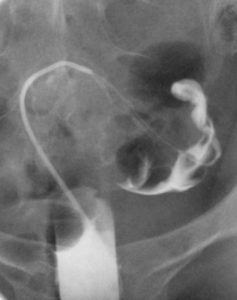
Fallopian Tube Recanalization
Fallopian tube recanalization (FTR) is a medical procedure that is performed to open or clear a blockage in the fallopian tubes of a woman’s reproductive system. This procedure is typically done to help improve the chances of pregnancy for women who are having difficulty conceiving due to blocked fallopian tubes.
During the procedure, a small catheter is inserted into the cervix and guided through the uterus and into the fallopian tubes. A special dye is then injected through the catheter, which allows the doctor to see the inside of the fallopian tubes on an X-ray machine. If a blockage is found, the doctor may use a small wire to open the blockage and restore normal flow through the tube. Fallopian tube recanalization is an outpatient procedure, meaning the woman can go home the same day. Some women may experience mild cramping or discomfort during the procedure, but this usually goes away quickly.
It is important to note that not all blocked fallopian tubes can be successfully recanalized, and the success rate of the procedure depends on the location and severity of the blockage. Additionally, even if the tubes are successfully recanalized, there is still a risk of scarring or re-blocking in the future. Women who undergo fallopian tube recanalization may also need to use assisted reproductive technologies, such as in vitro fertilization (IVF), to improve their
chances of becoming pregnant.